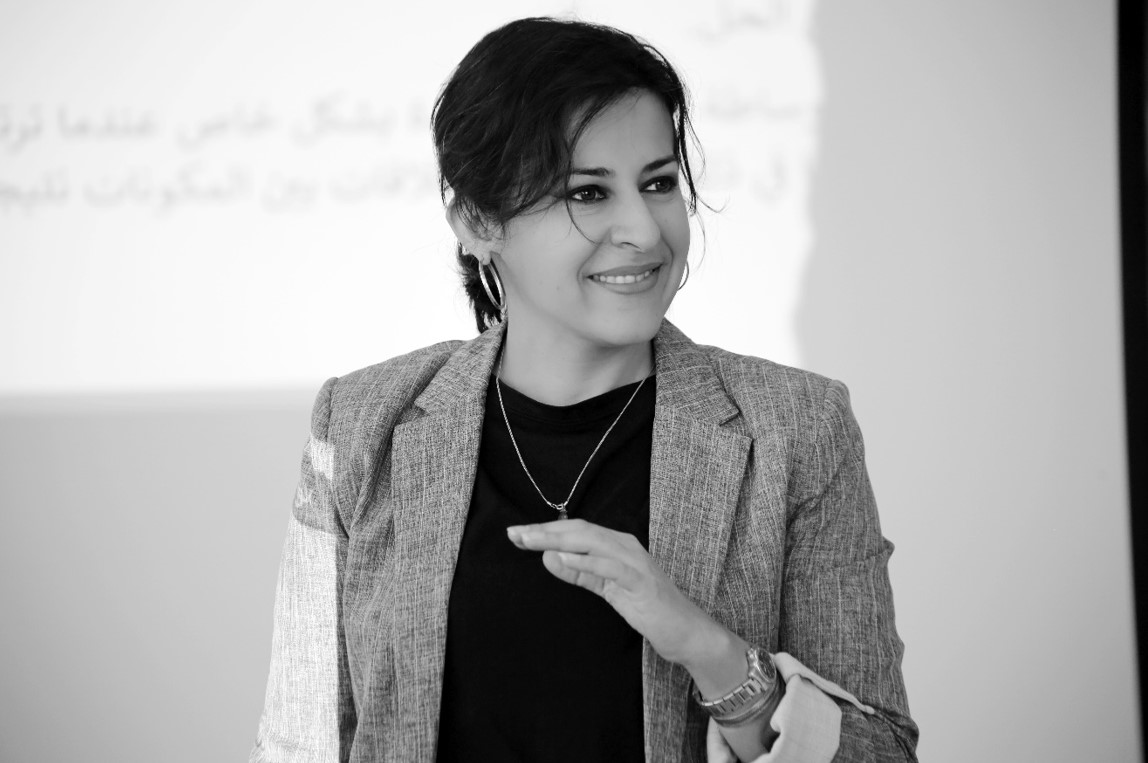Zainab Qassim, an Iraqi woman mediator who helped reintegrate families accused of ISIS affiliation into their home communities
Date:

Between 2014 and 2017, Iraq experienced a displacement crisis of unprecedented national scale, with more than 5 million people, roughly 15% of the Iraqi population, displaced by the Islamic State’s (ISIS) violent insurgency and the military campaign to liberate areas that came under the extremist group’s control.
Ethnic and religious minorities were targeted with brutal violence that caused the displacement of whole communities, particularly in Sinjar and the Nineveh Plains where Yezidi and Christian communities historically live. While the atrocities committed against minorities were among the most grievous of this period, the majority of people displaced were Sunni Arabs originating from the western and northern governorates of Iraq.
ISIS’ offensive and occupation divided communities into two broad groups: on one side are those who fled ISIS’ arrival and occupation – and sometimes participated in the military campaign to retake territory from the extremists group; and on the other side those who remained under ISIS’ occupation and were displaced when the military campaign began.
For those who remained and lived under ISIS occupation, communities differ in their perception of what ‘level’ or ‘type’ of collaboration warrants an accusation of affiliation to ISIS. Although some residents in ISIS occupied territory undoubtedly collaborated with the extremist group, this collaboration was extremely diverse, and ranged from simply paying taxes imposed by ISIS to committing horrific acts of violence under the group’s banner. Accusation of ISIS affiliation usually draws on community’s perception of people who held certain roles under ISIS or committed serious crimes on behalf of the group. Typically, this perception can taint whole families, not just the individuals involved – extending even to distant relations.
The perception that a family supported ISIS has serious repercussions for return prospects. Families with perceived affiliation to the group often find their return blocked by security actors, experience community rejection and stigmatization, and are at high risk of revenge attacks and violence. Female returnees to ISIS-affected communities are at a higher risk of sexual and gender-based violence, particularly female-headed houses and those in rural areas.
Between 2015 and 2020, numerous communities across Iraq signed local peace agreements aimed at setting the foundations for peaceful future relations between internally-displaced persons (IDPs) accused by some community members and security actors of siding with ISIS, and their ‘home’ communities, members of which include those who rejected or fought against ISIS, or were victims to its practices. A key component of each peace agreement was to facilitate the return of IDPs accused of ISIS affiliation from camps to their home communities.
In Hawija, west of Kirkuk, the official peace agreement negotiation process was almost exclusively a male enterprise. Yet simultaneous to the official negotiations, Zainab Qassim, a mediator with the NGO Sanad for Peacebuilding, met with women from both ‘sides’ – that is, women from families accused of supporting ISIS and women from families victimized by the extremist group – to negotiate the terms on which IDPs accused of ISIS affiliation would be permitted to return. This gave women from opposing sides the opportunity to air their grievances, engage in dialogue, and develop better-informed positions. As a result of these negotiations, women often developed more empathetic positions and could see avenues to reach an agreement. This engagement was vital because – even though the formal negotiations only involved men – unless women accepted the agreement, it would not be possible to implement, as Zainab explained:
“Often women who are involved in these negotiations on the ‘victim’ side are fixated on revenge, they feel very strongly since it was their husband or father or sons who were killed by ISIS. So it is vital to really understand them, and they see that you understand them, before you can move to discuss what the agreement is trying to do. The peace agreement is negotiated by tribal leaders, but it is the women who go really for it or against it and the agreement will only be meaningful if they are willing to accept it.”
Zainab also noted that it was equally important to influence the attitudes and behaviour of women during negotiations, since reaching a successful agreement depended on “how people act every day while they negotiate, not just what happens at the negotiation table.”
She explained that “women often try to change attitudes and behaviours while the negotiations take place, because if someone keeps a bad attitude then it will be impossible to reach a solution. For example, there was a powerful woman in Qayarra who was involved in mediation [for the peace agreement], and whenever she heard women talking badly about families with ISIS affiliation, she would tell them to stop. Conflict is more personal, multi-layered, and peace also requires multiple layers. Not just the high level drafting and signing peace agreements, but also engaging with women from both sides to get their buy-in and acceptance.”
To learn more how women in Iraq have mediated important post-conflict reconciliation issues, read our report.